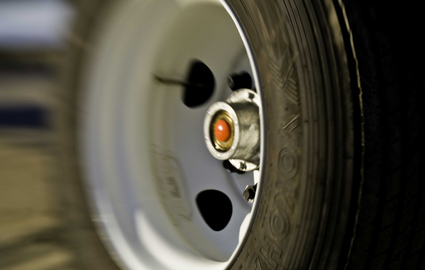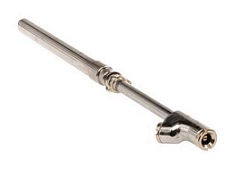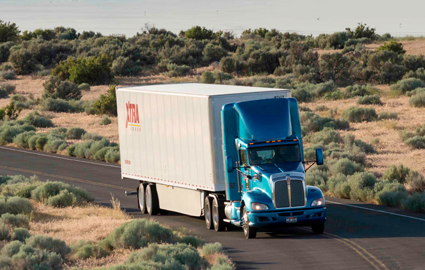
4 Tire Pressure Tips to Keep Air In and Money Out of Your Tires
Correct tire pressure is as basic to freight transport as camouflage is to deer hunting. Sure, you can work without it, but success might elude you.
Fortunately, unlike that whitetail, tires can’t run away. So grab your gauge and let’s review the basics.
Why is tire pressure so important?
Because the pressurized air held by your tires is what supports your cargo. The tire is the container that makes it possible—the high-tech, expensive container that you want to get the most life from.
The right inflation pressure can minimize irregular wear, which gives you more mileage and reduces your tire-handling costs.
Tires last longer when they’re properly inflated.
How much longer?
The Technology & Maintenance Council (TMC) reports that 10% underinflation will shorten tread life by 9% to 16%.
Here’s what that means in real dollars.
On a tire that costs $350, 10% underinflation could cost you as much as $56 per tire. And, because you’ll change tires more often, you’ll pay more in tire service fees. And don’t discount the extra downtime of your even more expensive tractor, trailer and driver.
But how many drivers and maintenance people, if they had a target pressure of 100 psi, would consider 90 psi close enough?
What if the underinflation is worse than 10%?
TMC suggests that each 10% underinflation subtracts the same amount of tread life. So 20% underinflation could cost you as much as $112 per tire.
However, if your underinflation exceeds 10%, you’ll probably have even bigger problems. Like flats and emergency road service that can cost anywhere from $100 to $1,000. Plus downtime.
Underinflation by 10 psi can reduce fuel economy up to 1%
What about duals?
Tires in a dual capacity should match in diameter. If they don’t, the smaller tire is dragged along by the larger, resulting in rapid and irregular wear on the smaller tire.
Different inflation in the two tires can cause their diameters to differ enough to result in this kind of problem.
Are wear and fuel economy the only losses from incorrect tire pressure?
Nope. They’re just the beginning.
A truck tire goes through a full revolution, flexing all the way around, about 500 times per mile. At 60 miles per hour—a mile a minute—that’s 500 times a minute. Tire engineers call this flexing “deflection.” Tires are designed to withstand a certain amount of deflection during their lifespan.
Underinflation, though, increases deflection, which means underinflated tires consume more energy, which uses up more fuel.
How much more?
Underinflation by 10 psi can reduce fuel economy by .5 to 1%, according to the EPA.
So your current 7 mpg would drop to 6.65 mpg.
At 100,000 miles per year, that drop in mpg would cause you to use an extra 84 gallons of diesel, or about $181-worth. In wasted fuel. Per truck.
What other losses are caused by underinflated tires?
Underinflation is a major contributor to premature tire removals or tire failure.
But even if things don’t go that far, flexing generates heat. Just as time ages people, heat ages tires. If you’re used to getting an average of two retreads from each casing, you may see your average drop to one and a half.
If your casings are worth $75-$95, instead of getting a useful retread, you could lose the casing, plus have to pay the $7-$10 disposal fee most states require.
4 steps anyone can take to prevent loss of tire pressure
You already know these easy, common-sense steps. So use this as a reminder to make sure all your tires are inflated properly.
Check tire pressure regularly. Use a good gauge, and keep it calibrated.
Keep wheels clean and properly lubricated.
Make sure valve stems and cores are in good condition. A valve core must seal at very high pressure. If even a tiny bit of dirt gets in, it can prevent proper sealing. Just as water can freeze and crack concrete, water can freeze inside valve stems, which disrupts the seal.
Use good quality metal valve caps. Caps are the primary seal against valve leaks and keep dirt and water out of the mechanism.
20 minutes for longer tire life
It only takes 20 minutes to check and adjust the tire pressure on 18 wheels. If you do it every week, chances are you’ll have very few problems with underinflated tires. That means increased uptime, better fuel efficiency, longer tread life and improved retread-ability—all of which can keep a slow leak of profit from exiting your bottom line.
Now go check that tire pressure.
